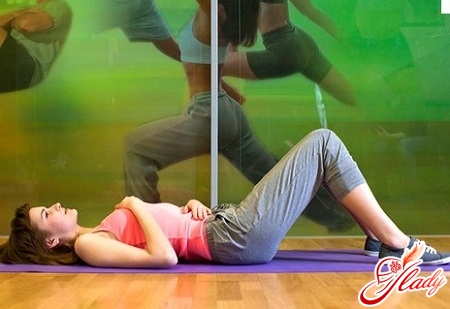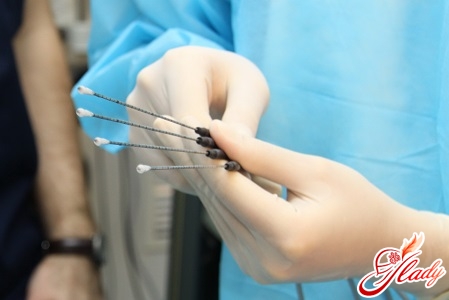
Bronchial asthma is the mosta common chronic disease of the respiratory system. In recent decades, impressive progress has been made in the treatment of asthma. In addition to drug therapy, therapeutic exercise (TE) for bronchial asthma is the most important way to maintain lung function and the quality of life of patients.
What is bronchial asthma?
Asthma is a chronic disease,which inflammation develops in the walls of the small bronchi. This inflammation leads to swelling of the mucous membrane, the appearance of viscous mucus in the lumen, and periodic spasm of the smooth muscles of the bronchi. These changes cause narrowing of the lumen of the small bronchi (bronchial obstruction) and the main symptoms of asthma: difficulty breathing or even suffocation, cough with difficult to separate sputum, wheezing in the chest. Often the causes of inflammation in asthma are: allergy to microscopic house dust mites, animal hair, plant pollen; hereditary predisposition, taking certain medications. Sometimes it is quite difficult to determine the cause of asthma. It is well known that infection is not the cause of chronic inflammation of the bronchi in asthma, so asthma is not treated with antibiotics; there are special anti-inflammatory drugs for this. The bronchi in bronchial asthma are characterized by a state of increased reactivity (hyperreactivity). They react with a spasm to any external irritant: dust, smoke, cold air, strong smell, contact with allergens. These irritants are called asthma triggers and can lead to an attack of suffocation or coughing. Asthma can occur at any age, but children and young people are more likely to get sick.
Physiotherapy: a role in the treatment of asthma
Because asthma is an inflammatorydisease and the main direction of its treatment is anti-inflammatory and bronchodilator therapy, the role of physical exercises can be underestimated by the doctor and the patient. But even the most modern drug therapy without sufficient physical training for asthma will lead to deterioration of lung function with age. Physical therapy is a system of physical exercises that stimulate the vital functions of the human body. Physical education for many diseases develops endurance, muscle strength, coordination of movements, and improves adaptation. Therapeutic gymnastics for bronchial asthma can be useful for patients of any age, with different forms and stages of the disease. The main thing is the correct selection of a set of exercises taking into account the individual characteristics and preferences of the patient. Physical exercises for asthma help to increase lung ventilation and improve gas exchange. Physical education helps to improve blood circulation in the lungs, prevents the development of emphysema, helps restore the elasticity and mobility of the chest, and improves the drainage function of the bronchi. It is known that with bronchial asthma, due to the disruption of breathing mechanics and chronic oxygen deficiency, the function of other organs, primarily the cardiovascular system, is disrupted. Regular physical training has a normalizing effect on blood circulation, increases the utilization of oxygen by tissues. Therapeutic physical training for asthma has the following main goals:
- improvement of the function of the respiratory muscles and the mobility of the chest;
- normalization of breathing mechanics;
- improvement of bronchial drainage with increased production of bronchial mucus;
- general aerobic training, increasing physical endurance;
- improvement of the patient's psychological state and quality of life.
To strengthen the respiratory muscles, improve ventilation of different parts of the lungs and drainage function of the bronchi, a special set of breathing exercises is used.
An approximate set of breathing exercises
- Standing position standing. Perform leans forward, freely dangling hands. Breathe through the nose, exhale through the mouth, through the folded lips during the tilt. Exhalation should be 2-3 times longer than inhalation.
- The starting position is standing, hands should be lowered along the trunk. Taking a breath, raise the brush to the axillary hollows. On exhalation, they stretch their arms up, and then relax them down.
- The starting position is standing, hands are lowered. They take a deep breath, flex their right leg as they exhale, and, helping themselves with their hands, pull their knees to their chests. Repeat for the left foot.
- The starting position sitting on a chair, the back should be kept straight, pressed to the back, hands along the trunk. They inhale, on exhalation they make a slope to the side, sliding their hands down. Repeat in the other direction.
Physical exercises of this complexperform 5-6 times, it is necessary to monitor the depth and rhythm of breathing, the duration of exhalation is 2-3 times longer than inhalation. There are special author's methods of breathing exercises for bronchial asthma. The most famous of them are the gymnastics of K. P. Buteyko and A. N. Strelnikova. It is better to master them, especially Buteyko gymnastics, under the supervision of an experienced instructor. These physical exercises are aimed mainly at improving the mechanics of breathing. Not only physical education can improve the drainage function of the bronchi - this is facilitated by special breathing simulators, for example, the Frolov simulator. The only contraindication for breathing exercises for asthma is asthmatic status. Even a severe exacerbation of the disease should not be an obstacle to accessible physical activity. As is known, in the intensive care units and intensive care units of hospitals, after removing the patient from a life-threatening condition, they begin "activation", starting with breathing exercises. Naturally, this should be done under the supervision of a doctor and an experienced exercise therapy instructor.
An approximate set of exercises for exacerbation of the disease and sparing semi-fast treatment
The exercises are repeated 5-6 times, without allowingoverfatigue of the patient. As the condition improves, physical exercises for small muscle groups of the limbs are included in the complex, then more active movements involving medium and large muscle groups. Pauses for rest and muscle relaxation are mandatory, and the patient's condition is monitored. Any exercise must be performed on exhalation (flexion and extension of the arms, torso bends). Physical therapy during an exacerbation of asthma should not include exercises associated with straining and prolonged breath holding. The optimal ratio of breathing and general strengthening exercises is 1:1. After the restoration of lung function indicators, physical therapy includes general developmental exercises that help improve blood circulation, strengthen the muscles of the back, legs and arms. During the period of remission, physical exercises with dosed resistance, light weights, with equipment and on equipment can be used. In addition, aerobic training is mandatory: walking, jogging, cycling, swimming, depending on the patient's preferences and tolerance of the load. During the remission period, it is recommended to perform a set of breathing exercises daily, aerobic training and general physical training - 3-4 times a week. Aerobic training should preferably be done outdoors, while avoiding contact with asthma triggers. Thus, people with pollen allergies should not train outdoors during the flowering of allergenic plants, people with increased sensitivity to cold should not go jogging in damp, windy weather. In some patients, bronchospasm is caused by the smell of chlorine in the pool. Therefore, a specific type of aerobic training for each patient should be selected individually, with possible substitution, depending on the season, weather and other conditions. Patients whose bronchospasm is provoked by physical activity or inhalation of cold air can use a bronchodilator inhaler 20 minutes before training. If the need for an inhaler arises during each workout, it is necessary to review the general treatment plan and the intensity of the load during physical exercise. Correctly selected drug treatment for bronchial asthma allows the patient to maintain an active lifestyle and tolerate dosed physical activity well. It is important to remember that regular physical exercise is a necessary condition for good health and lung function in asthma patients.









